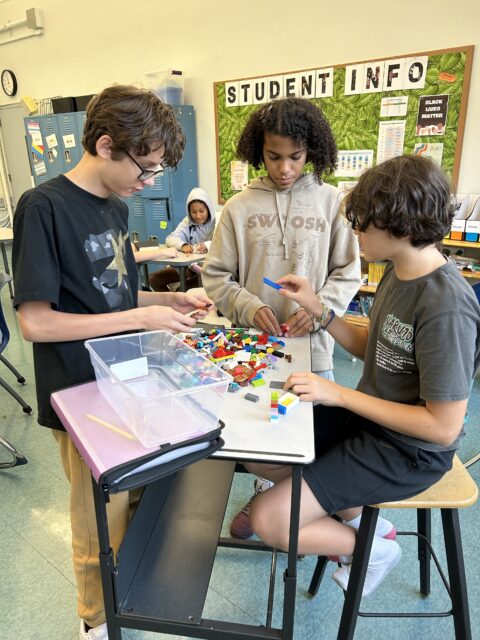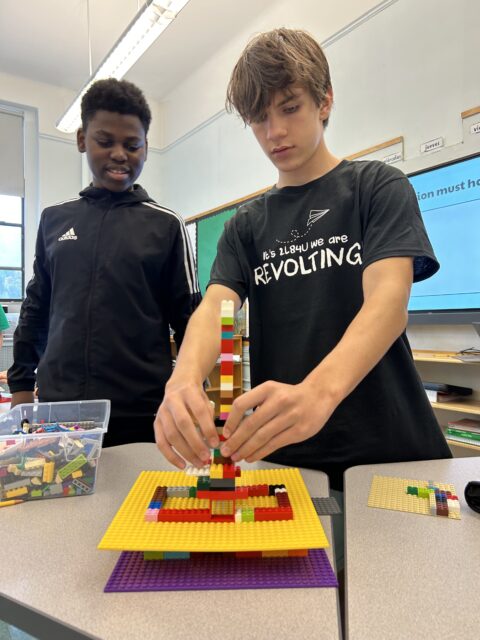Students in 8th grade Civics were tasked with building a simple Lego creation that had at least 2 floors, a roof, and a door. Sounds easy, right? Not so: instead of building them any way they wanted, students were assigned to different forms of government and had to make decisions about the buildings according to that form of government. Not so easy!
The MS Civics curriculum invites students to investigate government at the international, federal, state, and local level, and to make connections between history, current events, and democratic structures. It’s taught through the lens of the US government and builds on the 7th grade history curriculum, where students learn about the founding of America. “Throughout the year students are asked to think critically about our own government, because democracy isn’t easy.” says Civics Teacher Alyssa Hatton.
Studying different governance structures and leadership styles helps students become engaged citizens who can think critically and are empowered to chart the course that our city and country take. The Lego project is a hands-on, concrete way for students to develop a deep understanding of the pros and cons of each form of government and how well they help people achieve their goals. After the project, students discussed what they learned and wrote a reflection.
Here’s a summary of each type of government and the pros and cons students discovered about each:
Direct Democracy: Group members had to vote on every single decision. If the group didn’t agree, then they couldn’t carry out that action.
Pro: “No opinion was left out. That felt really good when building the house.”
Con: “A lot of building was delayed with everyone having to agree on everything. That means that our group didn’t move as productively as some of the other groups might have and that was a big advantage for the others.”
Republic: Group members first had to elect a leader to represent their ideas. Then the leader would listen to suggestions from group members and decide how to move forward.
Pro: “I felt like my voice was heard because everybody was listening to each other and me.”
Con: “Sometimes the person in power, the president, did not make good choices.”
Autocracy: One leader was selected and made all decisions for the group. Other group members could not offer the leader suggestions.
Pro: “It was pretty easy to listen to one leader and not many.”
Cons: “There was one leader so some people’s voices weren’t heard.”
Anarchy: There is no power structure and group members can’t tell other group members what to do.
Pros: “We could make a lot of progress fast and did not interfere with each other.”
Cons: “Since people couldn’t tell other people what to do, everybody was building whatever they wanted.”
Lily Kimmel, who also teaches Civics to the 8th graders, notes that students loved being able to use their hands and exercise their creativity to build their Lego projects, both of which facilitated a keen understanding of the difference between government systems. “I’m not sure they would have had such a deep understanding if they hadn’t used their hands to learn,” she said. They also loved that they were allowed and encouraged to argue with one another. Lily believes this was one of the most valuable lessons of the project: learning “to work with other people within certain constraints and come to agreement” – a valuable skill in our increasingly polarized society.
The project also gave students who struggle with writing (it’s a writing-focused class) the opportunity to use other skills, like building things based on a vision, and executing a plan. “We get to see the different strengths students have, and students get to experience themselves as having strengths,” says Alyssa. “It’s a real confidence booster.”

